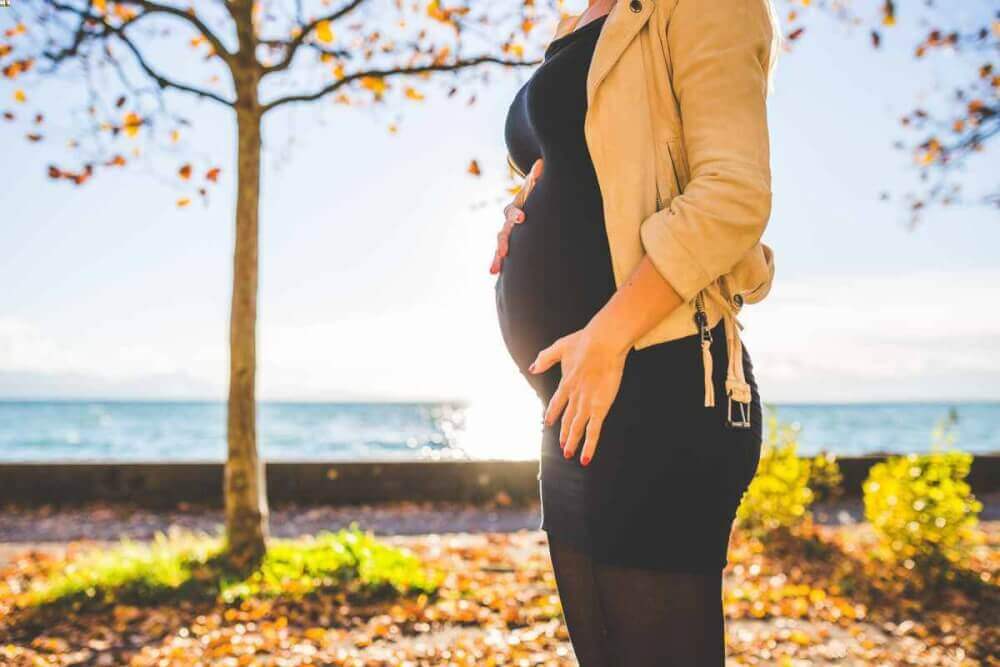Pregnancy-related pelvic girdle pain
September 22nd, 2021
Comments Off on Pregnancy-related pelvic girdle pain
Pregnancy-related pelvic girdle pain can be a frightening and overwhelming problem in pregnancy and beyond. It affects many pregnant women with symptoms persisting well beyond the post-partum period. Tafy Seade, a Women's Health Physio, explains what it is and how to treat it.

Pregnancy-related pelvic girdle pain also known as PR-PGP can often be a frightening and overwhelming problem in pregnancy and beyond. It can affect over half of all pregnant women with symptoms persisting well beyond the post-partum period. Common yes but normal no.
You may be experiencing PR-PGP if during your pregnancy you experience pain with:
 PR-PGP is pain felt in the joints in and around the pelvis that is at the front or at the back as shown above. This is the front of the pubic symphysis joint or at the back at the two sacroiliac joints and hips and lower back and can radiate in and around the area. This is commonly mistaken as pelvic instability when in fact the pelvis is a strong and stable bony ring.
PR-PGP is pain felt in the joints in and around the pelvis that is at the front or at the back as shown above. This is the front of the pubic symphysis joint or at the back at the two sacroiliac joints and hips and lower back and can radiate in and around the area. This is commonly mistaken as pelvic instability when in fact the pelvis is a strong and stable bony ring.
- walking
- difficulty standing on one leg, for example when getting dressed
- pain on moving your legs apart
- getting comfortable or turning in bed
- pain with getting in and out of the car / bed
- standing on one leg or crossing your legs
What is pregnancy-related pelvic girdle pain?
 PR-PGP is pain felt in the joints in and around the pelvis that is at the front or at the back as shown above. This is the front of the pubic symphysis joint or at the back at the two sacroiliac joints and hips and lower back and can radiate in and around the area. This is commonly mistaken as pelvic instability when in fact the pelvis is a strong and stable bony ring.
PR-PGP is pain felt in the joints in and around the pelvis that is at the front or at the back as shown above. This is the front of the pubic symphysis joint or at the back at the two sacroiliac joints and hips and lower back and can radiate in and around the area. This is commonly mistaken as pelvic instability when in fact the pelvis is a strong and stable bony ring.
What causes it?
During pregnancy, pregnancy-related hormones allow for the joints in the pelvis to soften and become more flexible. These changes are required to make room for your baby to grow and prepare your body for birth. Other changes such as weight gain, centre of gravity and the stretch on the supporting muscles can result in an increase in sensitivity over the pelvic joints resulting in pain. The pain can be a dull ache or a sharp pain and can be felt anywhere around the pelvis. Activities, positions and movements such as those described above can result in pain due to this.What can you do?
1. The following tips can help to manage your pain:- Adjust or modify your activities – that can include asking for help, spending shorter periods with tasks and pacing your day and your week including scheduling rest.
- Reduce your steps when walking, including taking care when turning or pivoting your body.
- When going up and down steps take one step at a time.
- Avoid carrying heavy loads where possible.
- Wear comfortable supportive shoes.
- Sit down when getting dressed and undressed.
- Getting in and out the car/bed whilst keeping knees together.
- Make use of a pillow in between the legs when sleeping.
- Change positions regularly and avoid being in one position for long periods.
- Sit tall with use of back support.
- .Stand tall and avoid hip hitching.
- Design a personalised exercise program that can help with the muscles that support the pelvis include pelvic floor muscles, deep tummy muscles and gluteal areas.
- Advise of specific pregnancy support wear that can offer support to the pelvic area, reduce pain and allow you to engage in certain activities.
- Advise and provide treatment for pain and give you management strategies such as massage techniques, use of ice or heat packs to assist.
- Exercises that can help you to keep active and exercise without making your pain worse.
Comments Off on Pregnancy-related pelvic girdle pain
